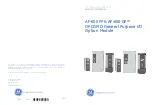
Getting Started
R&S
®
OSP
19
User Manual 1178.7100.02 ─ 05
Table 2-1: Power cords
Power supply cables according to country-specific standards
Order no.
European standard
Angular adapter for European standard
0025.2365.00
0086.4400.44
British standard
0006.7013.00
Swiss standard
0006.7020.00
US American standard
0006.7036.00
Australian standard
0006.7107.00
Chinese standard
0041.4752.00
Japanese standard
0041.6232.00
Brazilian standard
3587.8102.00
2.1.6
Considerations for Test Setups
Preventing electrostatic discharge (ESD)
Electrostatic discharge is most likely to occur when you connect or disconnect a DUT.
►
NOTICE!
Risk of electrostatic discharge. Electrostatic discharge can damage the
electronic components of the product and the device under test (DUT).
Ground yourself to prevent electrostatic discharge damage:
a) Use a wrist strap and cord to connect yourself to ground.
b) Use a conductive floor mat and heel strap combination.
A risk of damage due to ESD is typically limited to switch units that are equipped with
modules that have one or more of the following features:
●
Digital input or output ports (I/O ports)
●
Solid-state relays (SSR)
●
Integrated amplifiers in special modules that are delivered as part of a test system
Preventing electromagnetic interference (EMI)
Electromagnetic interference (EMI) can affect the measurement results.
To suppress electromagnetic radiation during operation:
●
Use high-quality shielded cables, for example, double-shielded RF, LAN and HDMI
cables.
Note: USB cables are of varying and often poor quality. Therefore, consider the
quality of each individual USB cable.
●
Always terminate open cable ends.
●
Note the EMC classification in the data sheet.
●
Ensure that connected external devices comply with EMC regulations.
Preparing for Use
















































